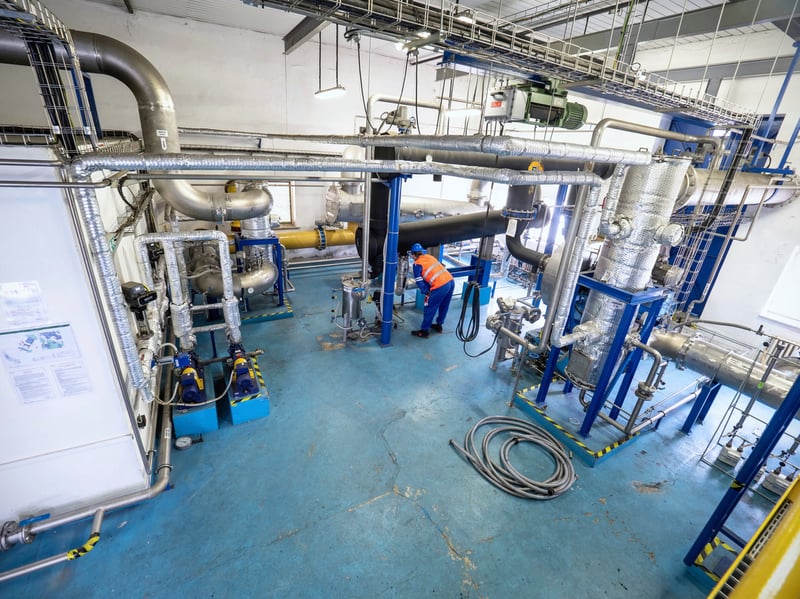Dangerous goods and hazardous materials can create hazardous areas which if not properly assessed, controlled, and maintained can lead to catastrophic ignition events, and potential loss of life.
Storemasta's Guest Contributor, Gary Kent — Specialised Services Manager and Accredited Auditor for Techserve Mining & Energy — shares his insights on hazardous areas and the key risks that are often overlooked.
What is a Hazardous Area?
A three-dimensional area in or around plant and equipment in which an explosive atmosphere is present or may be present in quantities requiring precautions for ignition control (construction, installation, use of equipment).
Explosive atmospheres can result from flammable gases, flammable/combustible liquid vapours (depending upon gas/vapour-air mixtures, this includes aerosols), or combustible dusts in clouds or excessive dust layers that can become clouds (depending upon the dust-air ratio, & dust molecule size <500micron).
Hazardous areas are defined relative to the degree of ignition risk, based upon the frequency of the occurrence and duration of the explosive atmosphere as follows:
|
Zone 0 |
An explosive gas-air /vapour-air mixture is continuously present, or frequency for long periods. |
|
Zone 1 |
An explosive gas-air /vapour-air mixture is likely to occur in normal operation. |
|
Zone 2 |
An explosive gas-air /vapour-air mixture is not likely to occur in normal operation & if it does will persist for a short period only. |
|
Zone 20 |
An explosive dust cloud atmosphere is continuously present, or frequency for long periods. |
|
Zone 21 |
An explosive dust cloud atmosphere is likely to occur, occasionally in normal operation. |
|
Zone 22 |
An explosive dust cloud atmosphere is not likely to occur in normal operation & if it does will persist for a short period only. |
Workplace health and safety legislation requires monitoring and control of gas/vapour levels relative to the % volume of explosible range (lower explosive limit LEL to upper explosive limit UEL). Typically alarm levels start at 5% with increasing priority actions required at 10%, 25%, 50% levels.
For combustible dust environments Australian standards require agreed and documented levels of housekeeping to be followed to mitigate hazardous areas.
Who has Responsibility for a Hazardous Areas?
The person in control of the business undertaking (PCBU) has ultimate responsibility for the site and ensuring any hazardous area is identified, documented, maintained, and controlled. Remember - Ignorance is no defence…. If you do not know or are unsure, then you must engage professional help via competent hazardous area classifiers and/or auditors.
Classification is the process of determining what hazardous materials/substances are present and in what quantities, and documenting those findings so that appropriate plant and equipment construction and controls can be employed.
Anyone designing, installing, testing, inspecting, or auditing hazardous areas must be competent to do so. All hazardous area documentation must be kept in an upto date verification dossier (HAVD) that should be made readily available to anyone that has a need to reference such information. The type of equipment, installation, and documentation required is related to the hazardous area zoning.

Any person working with a hazardous area must be competent to do the job.
Why does a PCBU have to abide by Hazardous Area Requirements?
Because it is the law in all Australia, you can be prosecuted for not doing so and could go to prison for corporate manslaughter if there is an explosion where persons are killed. There are numerous Australian standards covering all aspects of hazardous area requirements and which link into relevant regulations (AS/NZS 3000 wiring rules, & AS/NZS 60079 series of standards are the main ones).
Further guidance, plain English guides and related hazardous area/dangerous goods consultancy services can be obtained by contacting:
Gary Kent | Specialised Services Manager
Accredited HA/HV Auditor #02/0150
RPEQ #16186
Mobile M 0409394600
Mackay Office P (07) 4942 4511

Gary Kent is Storemasta's Guest Contributor, offering insights into hazardous area awareness. Gary is the Specialised Services Manager for Techserve and an Accredited Auditor.